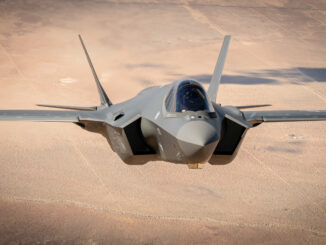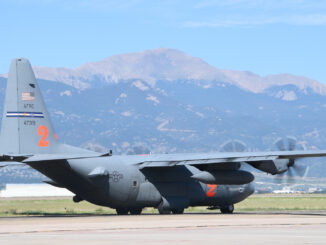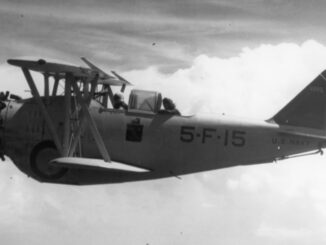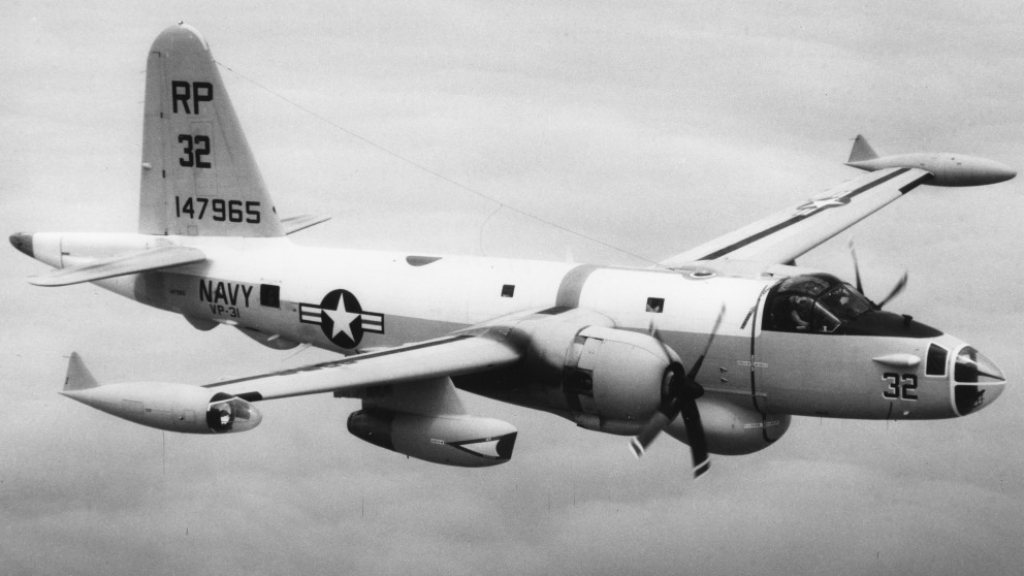 On 6th December 1941, just a day before the attack on Pearl Harbor, Vega Aircraft Corporation launched development of a new, land-based patrol aircraft. Initially, the project started as private venture of the company and was not related to any order or requirement of the armed forces.
On 6th December 1941, just a day before the attack on Pearl Harbor, Vega Aircraft Corporation launched development of a new, land-based patrol aircraft. Initially, the project started as private venture of the company and was not related to any order or requirement of the armed forces.
Vega Aircraft Corporation, established in 1937, was a subsidiary of Lockheed Aircraft Company. At the beginning, Vega manufactured light aircraft based on the Lockheed designs but, with the outbreak of the Second World War, the company focused on military aeroplanes. In the early 1940s, the Vega company produced Lockheed Hudson coastal reconnaissance aircraft for the Royal Air Force, then followed by its successor, Lockheed Ventura.
Based on its experiences gained from production of the two aforementioned aircraft, the Vega company decided to develop new aeroplane that could become a successor for the Ventura. The new patrol and bomber aircraft, initially designated Model 26 (or Lockheed L-26), had to be created by Jack Wassall and his construction team. Regrettably, shortly after the United States joined the war, the aforementioned project received the lowest priority.
This may sound strange today but, at that time, the anti-submarine duties in the US area of responsibility were carried out by the United States Army Air Forces (USAAF), not the naval aviation. Therefore, it shortly became important to equip the US Navy with modern maritime patrol aircraft which would allow the naval aviation to take over the anti-submarine and surveillance duties from the USAAF.
In consequence, the Vega company assigned its resources to develop a navalised variant of the Ventura, designated PV-1, which entered operational service in February of 1943. It was shortly followed by an upgraded variant, designated PV-2 Harpoon, which made the first flight in December of the same year.
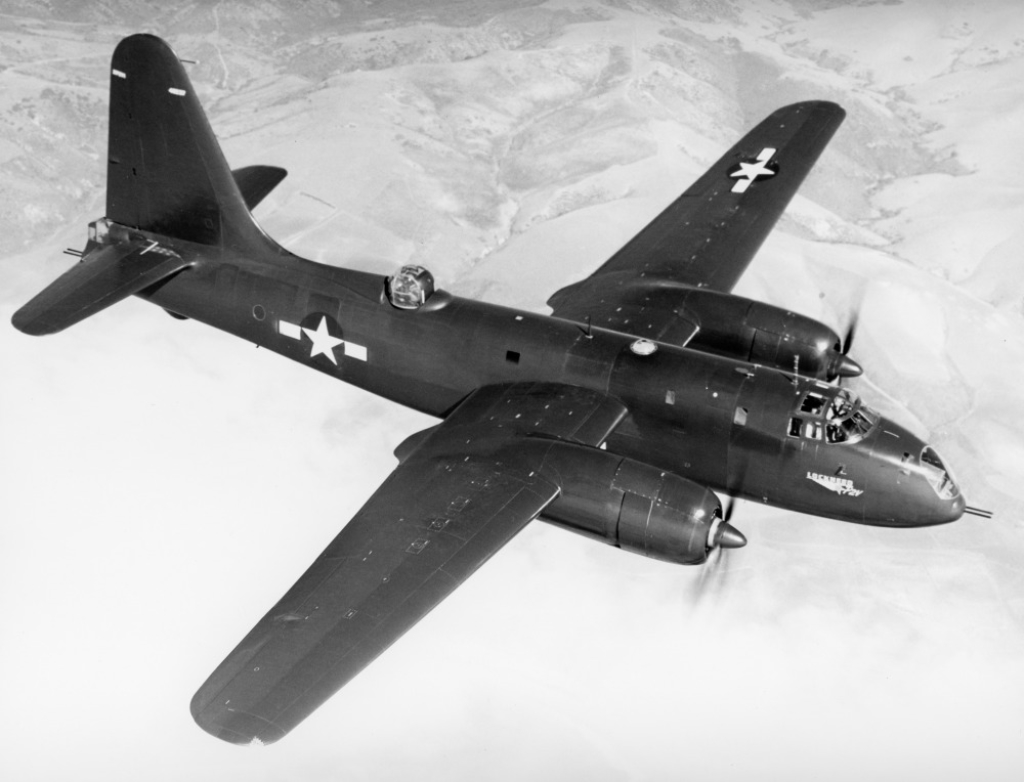
Although the US Navy expressed initial interest in the Vega private project of patrol aircraft yet in February of 1943, works on the PV-1 and PV-2 were prioritised. Only in April of 1944, the Navy authorities officially ordered two prototypes of the aeroplane, now designated XP2V.
On 17th May 1945, after the end of the war in Europe, the new aircraft performed its maiden flight. Two years later, it was officially approved for service with the US Navy and designated Lockheed P2V Neptune (as the Vega company merged with Lockheed at the end of 1943).
The Neptune was a high-wing monoplane, powered by two Wright R-3350-8A radial engines, generating 2,300 hp each. Although designed for the naval aviation, it still followed the initial concept of land-based patrol bomber and, therefore, was not equipped for carrier landing. The aeroplane was armed with machine guns in nose, tail and dorsal turrets, could carry up to 3,600 kg of load in an internal bomb bay, as well as up to fourteen unguided rockets under its wings.
Shortly after production of the P2V-1 was launched, the aircraft underwent its first significant modernisation. The P2V-2 Neptune was equipped with more powerful, 2,800 hp R-3350-24W engines, its nose turret was removed and replaced with six fixed 20 mm cannons and the machine guns in the tail turret were replaced by two cannons of the same calibre.
In the late 1946, still before the official approval of the type, the first aircraft were delivered to the US Navy. Shortly after, an idea was born to display the capabilities of the Neptune and, on this occasion, to bring the United States Air Force (USAF) down a peg in the long-standing rivalry between the navy and the air force.
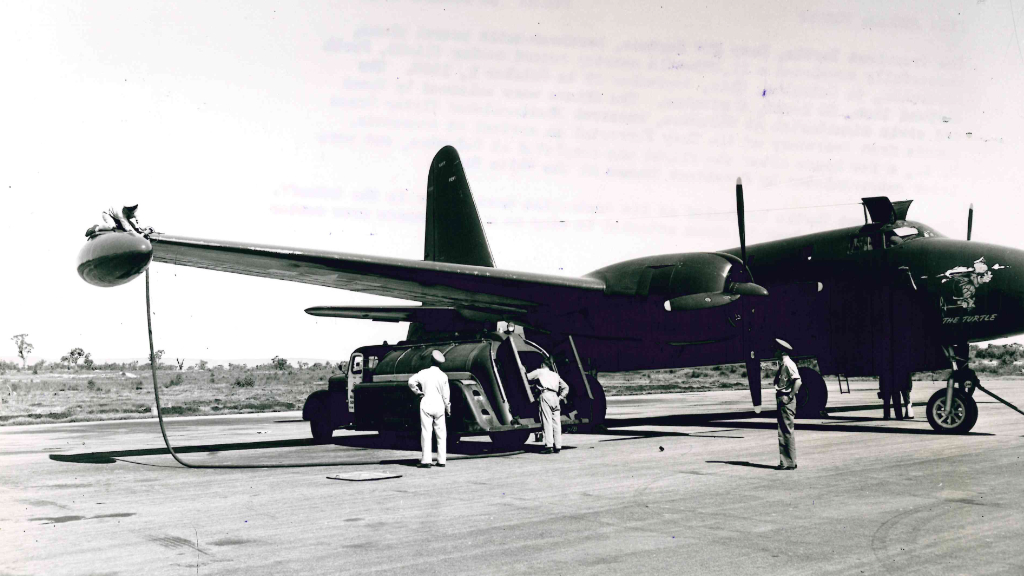
At that time, the USAF successfully worked on its positive public image. That early public relation effort was effectively supported by widely advertised long-range flights performed by Boeing B-29 Superfortress strategic bombers.
In a consequence, the US Navy authorities decided to overshadow the B-29s with transpacific flight of the Neptune. The aircraft chosen for that mission was the third produced P2V-1, nicknamed ´The Turtle´ (although commonly referred to as ´The Truculent Turtle´).
On 29th September 1946, equipped with additional fuel tanks and supported with rocket-assisted take-off (RATO – also referred to as jet-assisted take-off, JATO) system, ´The Turtle´ took-off from the Royal Australian Air Force (RAAF) Base Pearce. On 1st October, after covering a distance of 11,236 miles (18,082 km) in a non-stop flight lasting 55 hours and 18 minutes, the P2V successfully landed at Columbus, Ohio.
The Neptune not only broke the USAF record set in 1945 by the B-29 ´Pacusan Dreamboat´ which flew non-stop from Guam to Washington, D.C., covering 8,198 miles (13,193 km) in 35 hours and 5 minutes, but also beaten an unofficial record achieved by Japanese Tachikawa Ki-77 in 1944, with 10,212 miles (16,435 km) over a closed circuit.
This achievement lasted as the absolute record distance of the non-refuelled flight until 1962, when it was beaten by a B-52 Stratofortress. However, in category of piston-powered aircraft, the record remained unbeaten until 1986, when it was broken by Rutan Voyager.
Over the next years, the P2V became the primary land-based anti-submarine and maritime patrol aircraft (MPA) of the US armed forces, operated by both the US Navy, the US Marine Corps and the US Army.
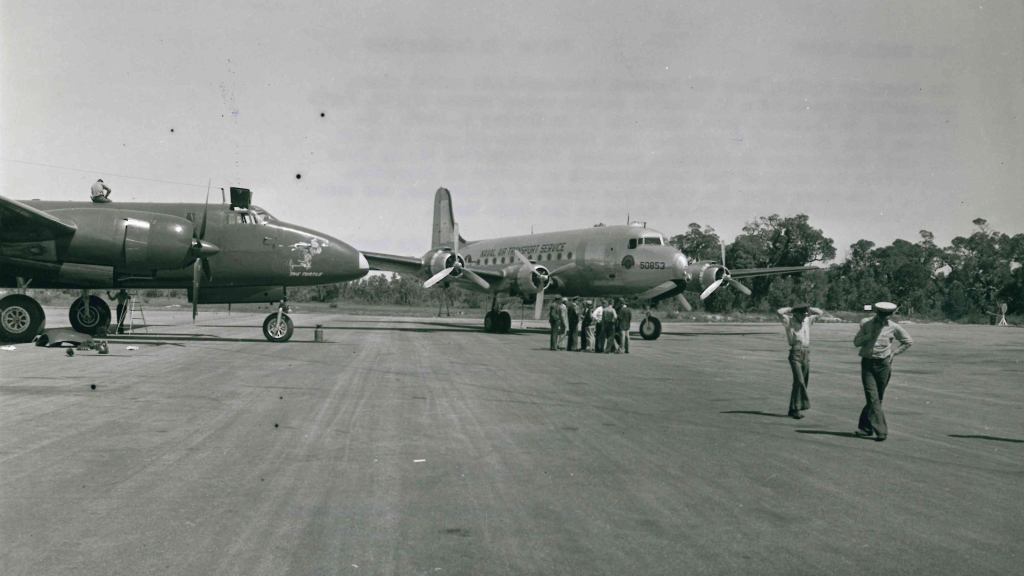
In the early Cold War years, the aircraft, initially created as the private venture with the lowest priority, became one of the most popular naval aircraft in the world. In addition to its US service, the Neptune was also acquired by air forces and navies of ten more countries: Argentina, Australia, Brazil, Canada, France, Japan, the Netherlands, Portugal, Taiwan and the United Kingdom.
A fleet of five Neptunes was also acquired by the Central Intelligence Agency for covert operations, within a programme codenamed Project Cherry. In addition, after their retirement from military services, the P2Vs were used for aerial firefighting in the USA.
Nevertheless, one of the most interesting operational roles of the Neptune was not related to the anti-submarine warfare. In the late 1940s, the US Navy desperately needed to establish a nuclear strike capability for the fleet, however, the then existing early built nuclear bombs were too heavy and bulky for any carrier-based aircraft.
Although the P2V was built as land-based aircraft, eventually it was proved the aeroplane can take-off from the carrier deck with assistance of the RATO boosters. In consequence, the US Navy ordered a batch of twenty-five Little Boy nuclear bombs that, despite being an outdated design, were small enough to fit into the Neptune bomb bay.
In 1948, the improvised fleet of the P2Vs converted into carrier-based nuclear strike aircraft began its operational service. Nevertheless, the Neptune was not built to land on a carrier. Therefore, in case of real combat mission, the only possibility for the crew to survive was to return to any friendly land airfield, or ditch in the sea close to any friendly vessel.
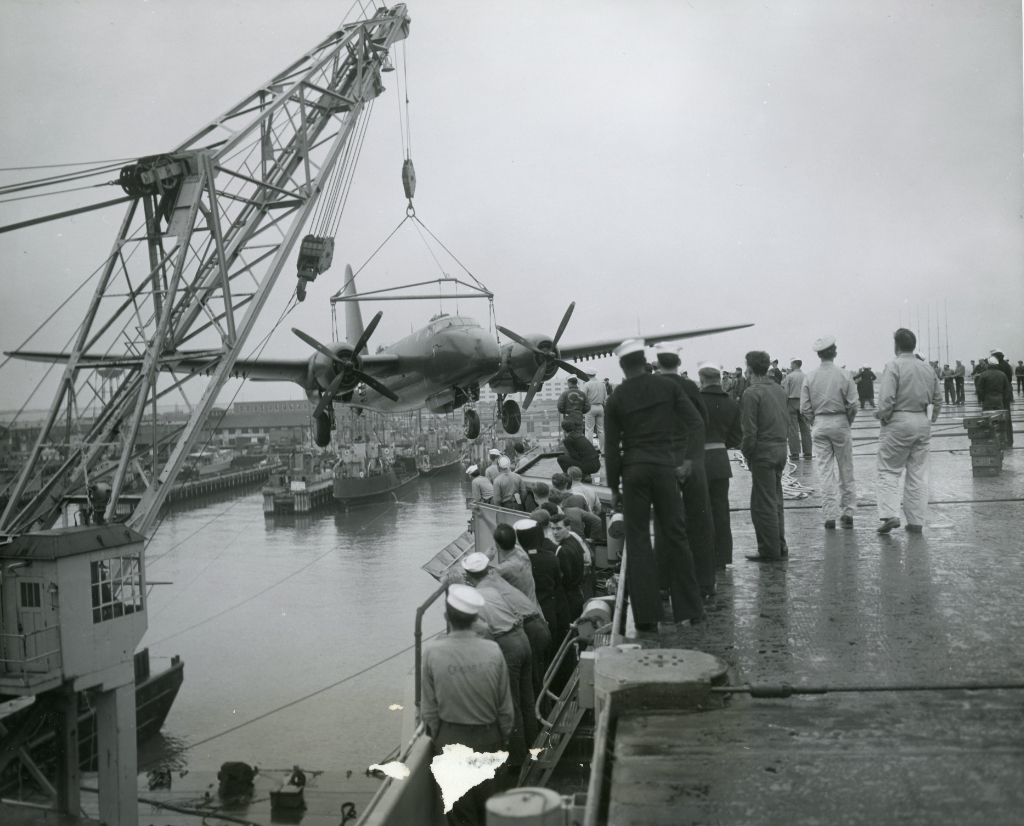
The P2V Neptune served in the role of stop-gap, one-way nuclear bomber until 1952, when it was succeeded by North American AJ Savage, the first carrier-based aircraft tailored for such operations.
Over the years, several modifications of the P2V were developed. Step by step, the aircraft defensive armament was reduced but more specialised anti-submarine and surveillance equipment, depth charges and torpedoes were added, as well as more powerful engines.
In November of 1949, the P2V-4 variant was introduced, equipped with improved anti-submarine radar, radio sonobuoys, long-range wingtips fuel tanks and the R-3350-26WA engines, generating 3,200 hp each (later succeeded by the 3,250 hp R-3350-30W).
On 29th December 1950, the most-produced P2V-5 variant of the Neptune performed its maiden flight. The aircraft was equipped with a searchlight and nose turret with two 20 mm cannons, the long-range additional tanks were moved to centreline of the wingtips and new glass panels were mounted in the fuselage for better visibility.
However, the most significant change to the initial design was made by adding two Westinghouse J34-WE-34 turbojet engines, mounted on pylons under each wing. The modified Neptune, designated P2V-5F became one of the first operational aircraft powered by both piston and jet engines. However, contrary to other aeroplanes equipped with mixed powerplants, the P2V had only single fuel system and its jet engines operated on avgas instead of dedicated jet fuel.
The jet engines of the Neptune were not running all the time and used only if necessary – during take-off, gaining altitude or speed, as well as in low-altitude missions – and the long-range capability of the P2V was still achieved by its two piston engines. Interesting fact is that, due to increased speed performance, the nose turret had to be removed from the jet-equipped Neptunes.
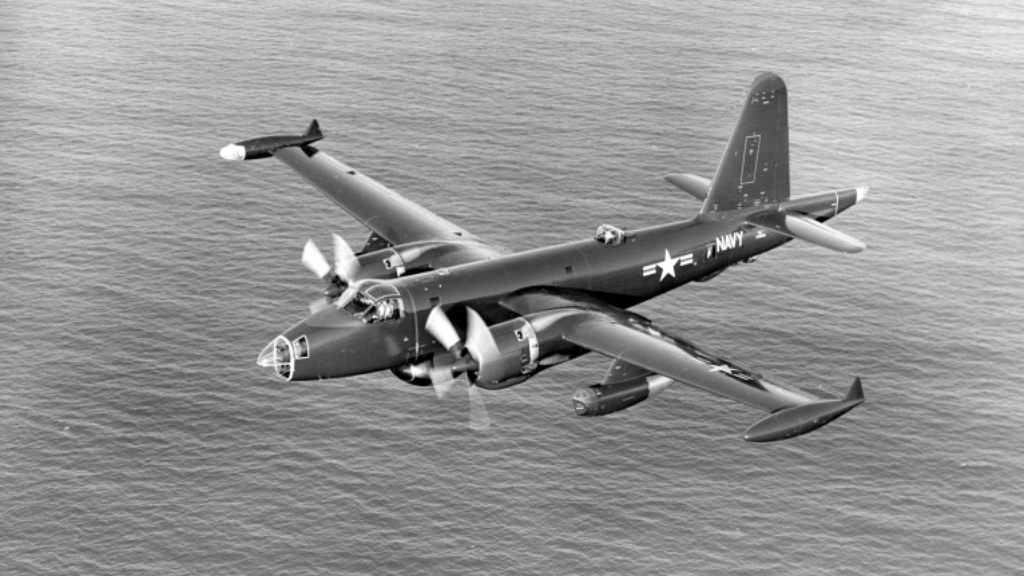
In April of 1954, the final production version of the Neptune was introduced, designated P2V-7. The aircraft was initially supposed to be manufactured with both nose and tail turrets, but finally they were replaced by observation point and anti-submarine equipment.
In September of 1962, following the restructuration of the US Navy, the official designation of the aircraft was changed to P-2 Neptune. As a result, the P2V-4, P2V-5F and P2V-7 were renamed P-2D, P-2E and P-2H, respectively.
The P2Vs were used in combat during the Vietnam War, by both the US Navy, the US Army, the Republic of China Air Force and the RAAF. Comando de la Aviación Naval Argentina (the naval aviation of Argentine) operated the Neptunes during the Falklands War, when the aircraft assisted in successful attack on HMS Sheffield.
The Neptune remained in active service until the mid-1980s, in many countries being then succeeded by another Lockheed-developed MPA, P-3 Orion. The firefighting P2V in civilian service were still active until the early 2000s.
In total, over one thousand examples of the P2V Neptune were built, in more than twenty-five main variants. As aforementioned, the P2V-5 was the most produced version with 424 aircraft made, followed by 287 examples of the P2V-7 variant. In addition, the aircraft was made under licence in Japan, as Kawasaki P-2J, with 82 examples built.
Several examples of the P2Vs preserved until today in aviation museums all over the world. In addition, there are about four private-owned and still airworthy Neptunes in Australia and the USA.
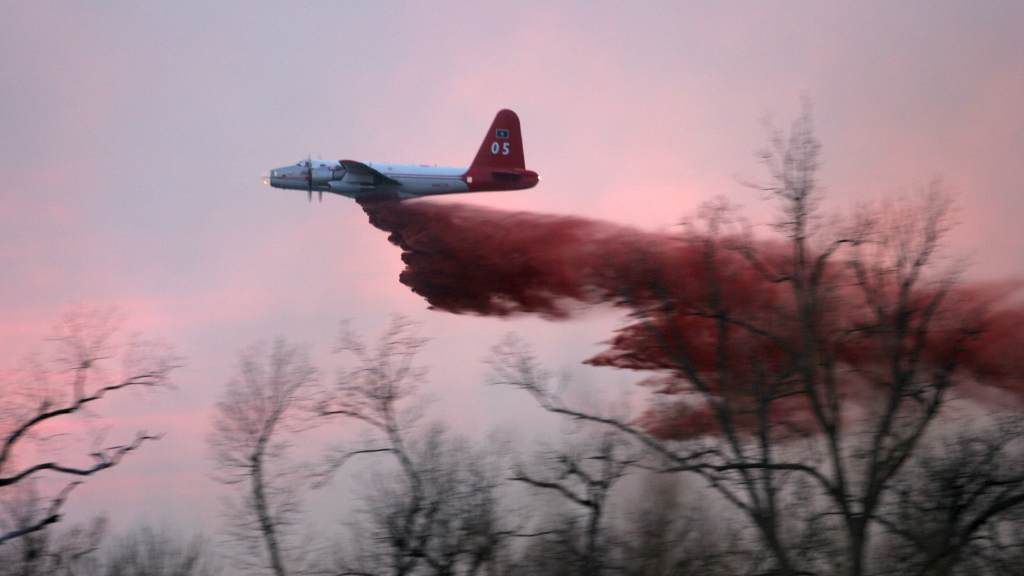
Cover photo: Lockheed P2V-7S Neptune (later redesignated SP-2H), San Diego Air and Space Museum, Robert Lawson Collection, 16_005854 via Flickr Commons
Sources: Lockheed P-2V Neptune: An Illustrated History, Wayne Mutza, 1966 / Lockheed Neptune, Warpaint Series No. 51, Kev Darling, 2004 / US Navy Naval History and Heritage Command

